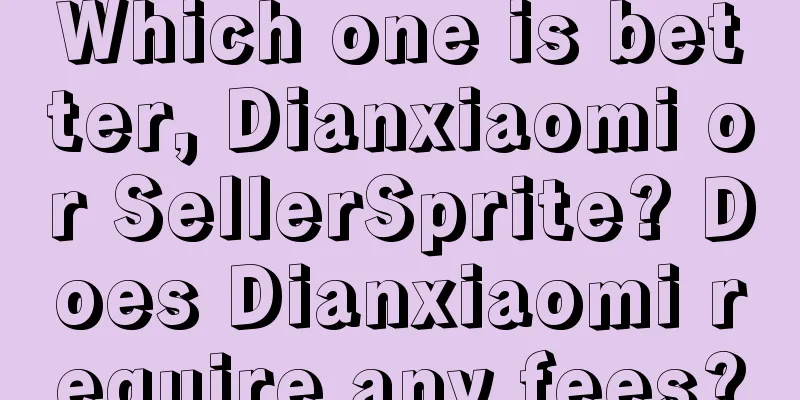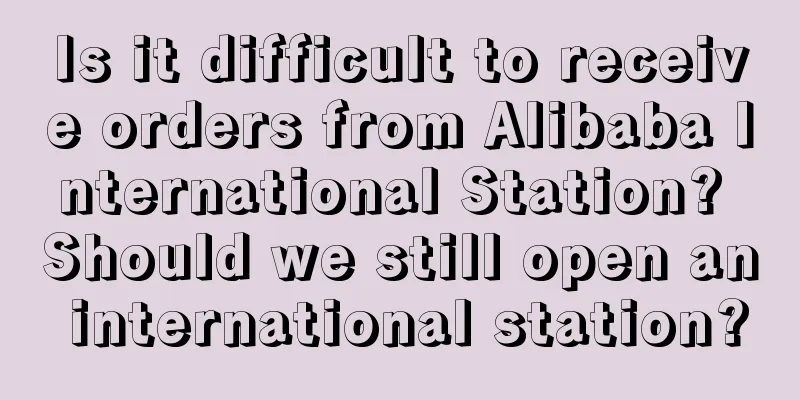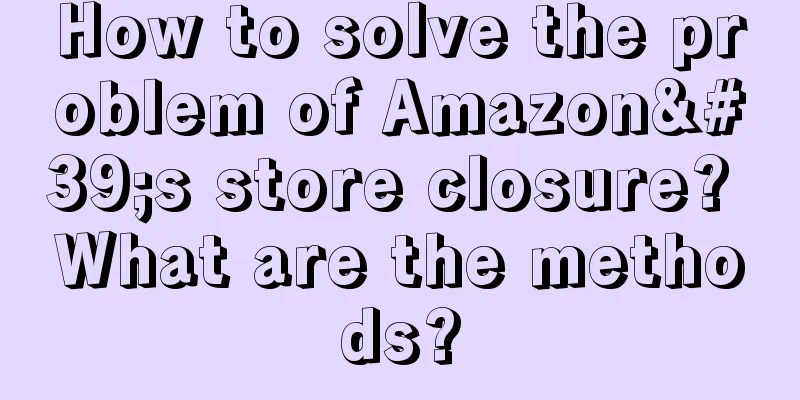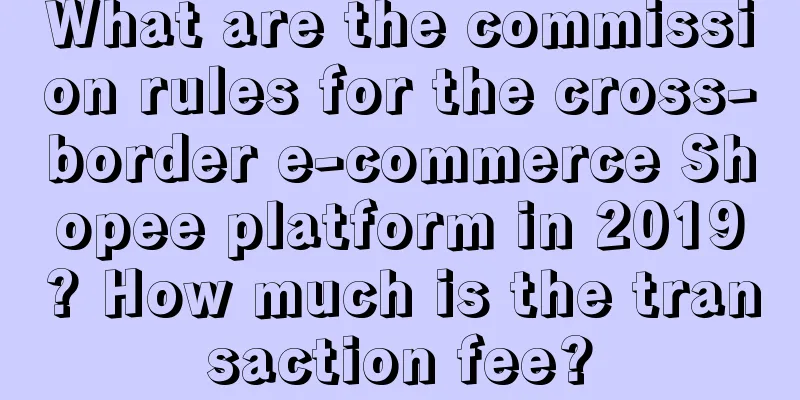Recognizing User Value and Transactions [Final Chapter]
![Recognizing User Value and Transactions [Final Chapter]](/upload/images/67e76e36dab3a.webp)
I sorted out and reviewed the remaining user value descriptions and optimized the PPT. For the previous article on user value before the error, you can click: Cognitive User Value and Transaction This sharing session will start with constraints. Since user value is a reflection of happiness, we will first talk about user value from the relationship between utility and happiness. This sharing session only has one chapter with 12 knowledge points in total, ranging from constraints to the judgment of core users. Mr. Yu Jun’s sharing largely confirmed my guess that with the changes in the market and external environment, there is no possibility of having one trick to rule them all. Companies rely more on daily deep thinking, constant trade-offs and decision-making to gain long-term competitive advantages and create long-term user value. 1. Recognize User ValueUsers make transactions to maximize their own utility, which can be understood from the perspective of happiness. So in the next article, we will first talk about the word happiness. Samuelson's formula: Happiness = (utility/desire). Happiness is like chicken soup. But Samuelson did not write chicken soup. He was mainly worried that everyone would think of it as chicken soup when he mentioned happiness. It mainly shows that happiness is the degree to which desires are satisfied. Some utilities are not satisfied, and some are the difference between 0 and 1, such as life and death. Sometimes, utility is degree-based and is gradually satisfied. In addition to improving utility, reducing desires can also improve happiness. If you read a few inspirational stories, you will be very satisfied. Most inspirational stories advise you to reduce your desires. If you reduce your desires by faith and reduce them more significantly, your happiness will be greatly improved. Of course, if you don’t read inspirational stories or believe in religion, once you have an accurate understanding of yourself, your distribution of utility will be more rational. In fact, after understanding these principles, people still have limited knowledge of how to use resources and how to spend money. You always need to know more clearly. The clearer you know, the more reasonable your allocation. Then your happiness will also increase. It is not just about making more money and consuming more goods and services. In fact, you can still reasonably allocate your desires and improve your happiness. 1. Changes in constraints change people’s behaviorIn many places, value is about money. For a long time, the perception of utility is that value is a reflection of labor. However, in the real world, creating value also involves the body and the mind, which has gone beyond economics. When you talk about products, you have to consider the infinity of desire, including physical and psychological. Traditional economics does not study these. As a company, the situation we face may be more complicated and far beyond the scope of traditional economics. We need to compare value. The value you create can allow users to trade freely with money. What users buy with money must be higher than what they pay. Profits measure the creation of value. Whether a company goes bankrupt or not does not depend on whether you create value. Instead, it depends on whether your efficiency is higher than that of other competitors. The most direct way to judge is GMV. The value of non-scarce goods and scarce goods is also different. If there is only one mobile phone company in the market, then it can make a profit by selling a product that costs 100 yuan for 101 yuan. However, a similar mobile phone company emerges and its production cost is only 90 yuan, but it sells it for 91 yuan. The user's decision model is relative value. At this time, for the user, buying a 91 yuan phone, he gets an extra 10 yuan of value. At this time, the use value has not changed. Whether the company sells it for 101, 91, 1 yuan, or gives it away for free, the selling price must be higher than the user value created by the company. When another company sells it for 91 yuan, the user has an additional difference. The user's decision model is the difference between the new and old experience, and there is also the replacement cost. For some people, the time cost is very expensive. For example, he thinks it is troublesome to go to the Apple store in the city. He thinks going to the city is equivalent to cross-border travel, and it is not worth spending 5 hours to buy a 91 yuan mobile phone. But another person, a young person, thinks the time cost is not very high, he is willing to go to the city to buy a mobile phone. His replacement cost is very low, so why not buy a mobile phone for 91 yuan. So for enterprises, whether you are replacing others or being replaced by others, it is actually like this. We say you need to create user value. If I want to make a new mobile phone, its chip is the most advanced and the user experience is particularly good, you are creating, but will you win? This depends on how many users actually benefit from this utility. We also need to compare with similar products. Some people say that they care about price, some care about safety, and some care about taking pictures. This person's pain point is charging. Charging for 5 minutes can give you 2 hours of talk time (but if he applies this point to electric vehicles, he will kill many electric vehicle companies in seconds). Therefore, the cheaper the product, the better it is. It is also a packaging effect, which depends on whether the user is satisfied with your packaging effect. It is very important for the company to satisfy the user's desire combination, that is, the utility combination the company should produce. For example, there are so many restaurants in Beijing, and each restaurant is actually a utility combination. The main source of users may be different, perhaps from Dianping.com, and the restaurant also provides a price range. The utility of 50 yuan, 100 yuan, and 200 yuan is different. Therefore, different users have different priorities and care about different utilities. For example, what is the utility of eating? If it is just to replenish energy, then 10 yuan per person is enough for a meal. In addition to energy, some people also require delicious food, and some people require healthier ingredients, so 20 yuan or 30 yuan is added. Then the merchant provides different cooking methods, and the merchant says that this is selling barbecue, which forms a classification. Why is the price high? Because the user value is high. He has a sense of classification and categorization. For example, I am a Michelin chef. I satisfy different desires. The more desires you buy, the more user value you get. Even if it is Japanese cuisine, whether each piece of my sashimi is frozen or air-shipped, the effect is different. For example, I can find the God of Sushi and ask him to make sushi for me, so the value I provide will be different. If the God of Sushi says that he will only come to China once in his life and will never go abroad again, then it will create a certain scarcity, and you will be different from others. For example, senior membership, VIP, in short, gives you the feeling that you are superior to others. Even if everyone in the world can buy LV bags, there will still be people who feel unhappy, and I want to buy one that is different from others. In other words, I want a more expensive one. This is a kind of value. When the Apple Store was first launched, there was an app that cost $999, because the upper limit of the price of apps released by Apple was $999. Everyone can develop this app, because it has no functions. It has only the icon and the five words "I am rich". It has no other functions. It costs $999 to download and pay for this app. But users buy it to show off their wealth, because you can buy a useless thing for $999. If you say you don’t buy it to show off your wealth, what else can you buy? So he sold thousands of them. He sold thousands of them in just a few days, and then it was removed from Apple’s shelves. If it hadn’t been removed from the shelves, I estimate that it could have sold tens of thousands or even hundreds of thousands. What he sells is the feeling of being superior. In some bars, when you buy a bottle of very expensive wine, they will put fireworks on it when it is delivered. What is the value of this? Because your wine is very expensive. But what is the use of the expensive part? If it tastes better or its quality is better, the certainty will be higher. But the difference is not worth the difference. In fact, what he bought was a sense of belonging. I wanted people around me, whether they were in the next box or around me, to know that I bought a very expensive bottle of wine. This demand is met by setting off fireworks. So you can't make so much money. What is the user value you provide? In addition to money, there are countless possibilities for user value we can provide. It can be superimposed unlimitedly, but the final effect is still packaging, that is, what kind of packaging is the most profitable. Different people have different understandings. Some people think that you sell it at such a high price when it has only a tiny bit of utility. We have to admit that everyone’s utility is different. Because of the scenarios, marginal effects, resource endowments, and cognition (information, thinking framework, preferences, and biases) provide you with utility. The desires that can be satisfied are different, and the effects provided are different. Different effects mean different values. They represent different amounts of money that people are willing to pay, and they represent different amounts of money that companies can earn. 2. Loss AversionWe say that users are particularly averse to losses, because the gains from transactions must be greater than the losses. The gains must be greater than the losses. For example, I go to Douyin for a while. I go to the search engine or play a game. Sometimes it is free. You don’t pay money but time, money, time, body, and psychology. I pay money, and I think the benefit is greater than the money. I also pay time, and I think the happiness I get is greater than the time cost. Because people are particularly averse to loss. Unless they are deceived or forced. The margin of the same item can only have a vector difference, high and low, but it is impossible to quantify the utility of different items, and it is also impossible to quantify the utility between different people. But there are still many people who have done many experiments. Countless people have done countless experiments, and then averaged them out. It is roughly 2.5 times. Let's use a case to explain. If you go out today and lose 100 yuan, and then pick up 100 yuan, the feeling of losing 100 yuan is 2.5 times that of picking up 100 yuan. So if you go out today, it is best if you lose 100 yuan and pick up 250 yuan, then you will be balanced. This is probably the principle. This is the average. You will find that different people are different. Maybe the difference is very small in the eyes of money worshippers. In their eyes, everything is money. There is no such thing as gain or loss. This kind of person is very stable in psychology, so it is easy for him to speculate in stocks. But normal people will feel very painful when they are averse to losses. 2.5 times is a rule found by countless people through countless experiments. We have millions of orders a day, and a GMV of almost 400 million. So the value we create is 2.5 times of 400 million, at least 1 billion. If I ask you to stop using WeChat for one day, how much are you willing to spend? How much are you willing to spend in one month? How much are you willing to spend in one year? This method is used to calculate the utility of WeChat, because WeChat cannot be charged. It is a free product. The user value of free products is evaluated through "loss aversion". It depends on how long he does not use the product and how much he is willing to pay. Of course, no one in China has done this experiment. Many foreign professors have done this experiment. In the end, they calculated that Facebook is worth $1,000 and Google is worth $2,000. This is how they calculated it. That is, how much you are willing to pay to stop using the product for one month. 3. User value is relative in non-scarce marketsWhen I first came to the company, I mainly talked about this, which could take me one or two hours. Before that, I had a very shallow understanding of user value. In the past, I only understood user value as user-oriented value, which is user experience and interface interaction. This afternoon, a friend told me that the China Computer Association (CSMM) will hold a conference, and my name is also on it, because he thinks that a product manager should be added under a bunch of technologies, and what they write is about product interaction and user experience. Their understanding of products is interaction, and user experience is mainly interactive experience. More than a decade ago, my understanding of user experience was mainly about interactive experience. In addition to the difference in business, I did not understand the user value to the extent of utility and desire at that time. And after talking about it today, you will find that user value and business value are not contradictory at all. I did not understand it clearly at that time. User value and business value are two sides of the same coin, creating profitable user value. Creating user value is certainly important for the benefit of users, but what about business? The more ads you can put out, the more money you can earn, but how many ads should you put out, what is the right scale, is there a reference standard, is it similar to your competitors, or is it the right way to do it? Or is it unethical to push too many ads? The more ads I push, the more money I earn, so what is right? That is, in this market, with this market background, users’ understanding of fairness and price. If they understand your price by comparing it with taxis and using it as an anchoring standard, you will also suffer. You can only use the taxi price as an anchoring standard. How did your competitor do it? He may have even less bottom line than you. He may be more unreasonable than me. But do you really want to maximize it? I feel guilty. Now I think these are not problems. I am here to make money. Of course, you make money by creating user value. This price is determined by the market. If others in the market are much worse than me, I can get the highest price. The price of the goods I sell is determined by the market. In the long run, the profit of full competition will be close to zero. 4. Who are the users?In this market, users have different understandings of price and fairness. For example, users think that online ride-hailing cannot be more expensive than taxis. If you do this, you have to consider the perception of users in this market . Generally, users pay you money, and those who pay for their time are your users. This is not a universal formula. In addition to these, users may also include: customers, governments, AT, employees, shareholders, suppliers and partners, substitutes, externalities. All of these can be regarded as your users, or I want to make a strategic change, or even a behavioral change. For each aspect, what are the benefits before and after the change, including the cost. For example, in the case of oil, it is easy to create value, but when it comes to value distribution, one link will always be sacrificed. When the machine revolution appeared, the value of human beings was unquestionable, but at the beginning, some workers were replaced. Electricity, oil, and mobile payments are actually the same. There will always be a part of them that are victims at a certain stage, but in the long run, it is at this stage that we need to distribute the value. Let those who are harmed be able to balance and complete the transition. So it is impossible for all to be value-positive and for users to be value-positive. At this time, the balance depends on which are the key nodes, which need to be greater than or equal to zero. If the positive forces on your side or the positive forces on several sides are greater than the negative forces, then time will be on your side. This is the principle of value distribution. All human behaviors are under constraints, and they pursue the maximization of value. The same is true for groups, which are also directed by people. The same is true for any organization, from the family to the society. For example, if I want to add a new product category such as takeout or express delivery, you need to think about whether the value of this new user is positive for all other users. 5. Addiction creates value, but also has negative value. How do we balance it?There are other addictions besides smoking, and addictions can be strong or weak. Games are just headlines, and gossip entertainment is just short videos. Do you want to make you addicted to playing? There is a lot of controversy. You say you want to make the game fun enough for people to keep playing. They don't want to go home for 24 hours, they must team up with others to play, or they must meet certain conditions to get a skin. You can design various conditions to stimulate people's desires. You can analyze which desires they have satisfied. These are just some of the categories. Is this right or wrong? Where is the scale? I think before we talk about values, most of them are actually economic models. We still go back to that condition. Making products is to maximize benefits under constraints. What I provide is a packaged utility set. This is a long-term value. You still have to conform to the values of society. You still have to conform to the level of social recognition. Do you really want your child to spend as much time as possible here? If you do it this way, you will definitely not be able to do it in the long run. Because he may like to play, skip school, and neglect his homework. Then the parents will definitely not let him play. Even social intervention and supervision will come. It must be controlled within reasonable limits. In fact, there is no simple formula to judge, saying that it can be tested. You even have to consider the competition in the market. Sometimes you will find that other people in the market do not have such addictive games at the beginning, and as long as you are a little higher than the average level, you will grow very fast. You will find that the excellence of popular products is because they satisfy a certain point and touch a certain point. The market is dynamic. Competitors can learn your strategy. In this way, everyone will become addicted. At this time, when everyone is causing great harm to society, you take a step back and this is also a relative effect. Because users will choose. Because your competitors want to make the most addictive game, the most gossipy game, the most entertaining, the most erotic game. That will definitely leave another market opportunity. Then some people will be restricted by other constraints. In fact, it is still a subjective judgment. Your perception of the world, your subjective judgment of the world, what the world is going to become, you have to actively avoid it. Or I just want to set a benchmark, I just don't do this kind of thing. I don't do anything addictive at the beginning. I make genuine products at the beginning. You will definitely lose a lot of income at the beginning, but in the long run, it will be valuable. Apple's App Store has refused to list pornographic and teenager-unfriendly apps from the very beginning. Although this decision will cause losses in the short term as many gray industry apps are put on the shelves, in the long run, parents do not need to worry about whether there is content that is not suitable for children, which reduces their transaction costs and actually increases the purchase volume. I think this function well reflects Yu Jun’s explanation of the value of opportunity, which is that most needs can be considered clearly through short-term and long-term interests, without the need for judgment through ethical values. And you will see that the big companies in this world all have high-sounding slogans and positive values. This is also the survivor bias. If all the people in a company are completely selfish, then these companies will not survive. The average level of altruism in a company must be higher than the average level in order to attract more people. If a company starts out by saying I want to grab the most money and the best food, what kind of people do you think you will attract? This is also a result. Even if a large company has low average values, it is because there is a very important factor that offsets this effect, but in the long run, there will definitely be problems. Many small companies, if you aim to become a big company, must also set a very positive value, at least it must be above the average, otherwise it will be exposed sooner or later. Especially in this era. A few days ago, we invited an HR consultant to analyze how Alibaba and Tencent are doing. It said that Tencent’s concept is to be the most respected company. They said this concept is not good, it is too vague. (From this incident, Professor Yu Jun is right) Not as good as Alibaba. I'm talking about values. We need to look at them separately. The benefits of this thing in the last two years are indeed very high. But the benefits in the past ten years have been very large. This is indeed not very helpful for organizational construction. But for the outside world, he can use this to make his product experience higher than the long-term benefits of other companies, and he can use this to attract more altruistic talents and retain talents. Why haven’t they benefited in the past two years? Because the average has increased in the past two years. Everyone’s understanding of the user experience and interaction experience has increased. There are very few bad products. Even if there are bad products, they will be criticized because the entire media ecosystem has developed. Although enterprises are said to create user value, creating user value has nothing to do with your survival. Only competitive advantage can make you profitable and keep you alive. If you don’t have a competitive advantage, no matter how good you are to your users or how high-tech you are, you will die. So Tencent’s culture has no advantage in the past two years. 6. Technology-driven and product-drivenWhich is better, technology-driven or product-driven? Many people ask this question. What is the use of a product manager? I can do that. Another question is whether a product manager should understand technology. If he doesn't understand technology, he is not a product manager. In fact, this question still needs to return to the perspective of competitive advantage. The most typical example is Baidu, which claims to be technology-driven. So is technology-driven good or bad? In fact, I have never heard of the term "technology-driven" at Baidu. This term was made up after 2010. You can check any previous text records of Baidu and see that Baidu has never mentioned the term "technology-driven". This term was made up by Baidu later. The main reason is that after Google left, it really doesn’t matter what you do, because the market will pull you to an equilibrium state. After Google left, a technology-driven space was left in the market. Google is a very large and benchmark enterprise. The most important reason for its promotion of technology-driven concept is to attract talents. The benefits are too great. This is why Baidu became the Whampoa Military Academy. Because technology-driven actually refers to all technical talents. But when Google was around, it was useless to raise this banner. What's the point of saying you're second when there's someone higher than you? It's useless. But Google left a natural vacuum, and you can fill it. The benefits are too great. Talent is the foundation for success. Anyway, when I was at Baidu, we were driven by demand and had an engineering culture. The essence of demand-driven is to be market-oriented or user-oriented. As for the engineering culture, it certainly also emphasizes these, but it has been alienated. From what I have seen, it is no longer the same. At that time, when we talked about demand-driven, everything we did was centered around user needs. Of course, I made all the decisions on Baidu's user needs, but I was the one who brought up the engineering culture at that time. The three of us managed 80% to 90% of Baidu's engineering product team. The two most important points at that time were to emphasize the engineering culture and to differentiate our thinking from traditional companies. Baidu was indeed the first Silicon Valley-style company that brought in the technical culture. Other companies, whether Sina, Sohu, NetEase, or other traditional companies, or even Microsoft, don't have that kind of engineering culture. What Google emphasizes is actually equal communication and speaking with facts and data. In fact, it emphasizes this point, and I also like this style. So on the surface, we say that we are bringing in the culture of Silicon Valley, but in fact, we have never learned the Silicon Valley’s understanding of Silicon Valley culture. We believe that communication should be equal and based on facts. So the atmosphere of Baidu was quite different from that of many companies at that time. But later on, the atmosphere gradually changed. Later, the engineer-driven and technology-driven environment became the one where everything had to use better technology or be based on the decisions of engineers. At this time, you will find that the hit rate will be low. It is still demand-driven and market-oriented to be effective. As for Baidu, whether it was technology-driven or demand-driven in the beginning, I think there is never a yes or no answer. I think most of the students in China are science and engineering students, whether they study chemistry or physics. Our country does not encourage the study of critical thinking. We still encourage scientific thinking, because although the thinking of liberal arts is also rigorous, natural science is more regular. There is often a formula, and its various values can be applied to it and deduced in various ways. So those of us who are used to thinking in science often want to find a simple and clear answer. Once you say what you are studying, including products, because you have to involve people, the value of the product is not produced by you, that is a scarce stage. When new technology emerges, the products produced by this new technology are essentially scarce. So in the early stage, as long as you have the technology and can produce faster, it will be fine. But once there is competition at a certain stage, and after there is sufficient competition, you have to rely on utility to occupy the market. So it is impossible to say whether it is technology-driven or product-driven. 7. Understanding of market shareIn the competition between Baidu and Google, Baidu is indeed catching up. Because when I first joined Baidu, there was no search engine yet. It can be considered as zero. For example, for a simple company introduction, I started from the homepage and built it up little by little. The first article only had a few hundred searches. But at that time, Google, Sina and Sohu each probably occupied more than 10% of the market. Later, it gradually increased to 30%, 40%. In fact, the market share is very vague. Are you talking about the market share of search or the market share of commercial revenue? Different media have different interpretations. Do you mean the market share of big search or web search, or the overall market share? Because the user's understanding of the market is different from your definition of commercial Internet. He thinks searching for an image or reading an article in a forum are all searches. If you do a user survey, he thinks everything Baidu does should be considered a search because that's how users understand search. Google is mainly a web search. It also has some image search. It's not very easy to use. I do local calls. It's not a local low-level call. The ratio is too different. If you conduct user research, it seems fair on the surface, and Baidu naturally has an advantage. However, Baidu may not account for that large a share of web searches. Half of the traffic in the market is from affiliates, and only 50% of the traffic is actively searched by users on Baidu and Google. The remaining 50% is searched through various websites, which can be purchased with money. If you want to have a higher share, you can spend money to buy a lot of traffic, then your share will be higher. If you don't spend money, your share will be lower. Baidu started from scratch and later had at least 50% of active searches, which is more than Google anyway. How did it achieve this? First of all, technology must be important. It is not linearly important. 8. Not less than that, just enough is enough, the more the better, surpriseThe value of product utility to users does not mean that you can achieve the best by doing everything well. In fact, you also need to consider the cost, the accuracy of order splitting, or the time of dispatching the vehicle. Especially the performance of the server. How to make the pricing accurate? How to improve the algorithm and matching? Or if the response rate is 91%, 92%, 93%, is it good to reach 99%? It is not like that at all. You will find that some things have a threshold. It is unreasonable to be below a certain value. It is OK to use it when it reaches a certain value. Below a certain value, for example, you may not mention some safety issues, but you still have to do them. For some other things, when you reach a certain value, you will find that many users are very impatient about the distance of a taxi. When they call a taxi, they will be very impatient about the distance. Although users vary from person to person, their cancellation rate is very high above a certain threshold. They are particularly disgusted. Within this threshold range, the cancellation rate will drop a lot if you lower it a little bit. We are not pursuing a lower average cancellation rate. We just want to call for a shorter distance. There are some attributes that are better the lower they are. For example, the cheaper the better. Or the faster the time, the better. Of course, the utility of these users is not the same as our cost. The utility curve is one, and our cost curve is another. Here, the product is a combination of utility, not a combination of desire. Some are surprises. I didn't expect these contents. But I gave them a surprise. But if you give him a hundred surprises, then you may have to close down. Because you will definitely lose money. No matter how many surprises you give to users and what kind of surprises you give, the same principle still applies. I only create value that maximizes my benefits. I choose two or three of these surprises, and I choose the combination that can create the greatest utility for users at the lowest cost. It is a combination of utility. 9. Technology should not be too different, product differences are valuableAt this point, let's go back to Baidu and Google. We have to talk about the technical threshold first. Sohu, Sina, 360 at that time, 360 started late. In the early days, including Yahoo and Microsoft, they all made search engines, but from our internal point of view, if we use the 100-point scale, in fact, most of them except Baidu are around 90 points, so some of the gap can make most users migrate after comparison. Because the migration cost is very low. So when the search engine market just started, especially Sina and Sohu, they spent a lot of money to attract new users. The effect of attracting new users is very good, but if there are users who are not converted into high-frequency users, the number will not be large. Once they are converted into high-frequency users, they will always use other search engines. Most people can see who is good and who is bad, and users will migrate, so the number of users is not easy to increase. Comparing the user perceived value with Google, our scores are both around 90 points, sometimes 91, 92 or 93 points. But there are many places where I can improve the effect through product means. For example, updates are actually a large database, and it is good to update it once a month. We later found that Google has a small library that is updated every day. This small database may crawl data from around the world 24 hours a day from the perspective of efficiency. It crawls data for you in every time zone 24 hours a day. Users do not understand search engines, and they are not technical experts. They search for hot news today and tomorrow. They couldn't find it on other search engines, so I also uploaded a database that was synchronized every day. This had a small gap. Sina required its employees to go to work at 7 o'clock because it found that many employees went to work at 8 o'clock. 8 to 9 o'clock is the peak time. I go to work before 7 o'clock to change the first wave of news. That means there will be another wave of news at 8 o'clock in the evening. At 8 o'clock in the evening, another wave of people will change the news. So I only need to capture and convert at 8 o'clock in the morning and 8 o'clock in the evening. They can watch the news. Whether they are watching Fan Moubing being arrested or being fined for having a second child, they can watch the latest news. These cases, and time-sensitive cases, are available every day. There is no technical difficulty at all. Users don't know the technology behind it, so there is high retention. Baidu is better for some searches, Google is better for some. For some searches, Google is better. If you want to talk about academic content, Google is better. But it doesn’t matter. Baidu is better for a lot of content. In addition, with NetEase search, I also have MP3 and pictures. This is a whole. The impact on users as a whole is better, which leads to high retention. If you say that technology cannot make you and your competitors close to 100% overall, then the product only accounts for the last 3 points. Then the technology may be 97 points for both of them. At this time, if you can make it more convenient, the other products will be in vain. In fact, Google has not spent any money on this kind of investment in China. I buy a good 123 website, put it on the computer newspaper, and attract new users, because for new users, their old experience is zero. No matter what kind of user, as long as they have never used a search engine, the first use is a huge shock to them. And when he goes to Baidu first and then Google, Baidu becomes the old experience. What's the benefit of becoming the old experience? It means that others are much better than you, and he still needs to have a switching cost. It is very difficult for users to deny their own choices, which is an advantage. At the beginning, there are countless new users, provided that the technology has reached a certain level and the products have been superimposed to a certain level. If you add these factors together, you say whether technology is important or not. It has a limit. Before the user experience reaches 95 or 97, technology is the core. Other things are useless. After reaching the technical limit, unless you say that technology can greatly increase the gap to 105 or 170, then other things are worthless. But you can't do that. So at this time, other things are important. Look at the market outside of China, most countries have no competitors. You can lead by relying on technology alone, and it is indeed driven by technology. So when you need product drive, everything will fail. He has also made many social products because his technology is indeed very strong. Without any dispute, it can come from behind. Many products can indeed establish sufficient competitive advantages through technology at the beginning. The difference in effect is enough. The others don’t matter. Google’s product manager is indeed a chore. Because his technology can establish sufficient competitive advantages to win products. But this is not useful every time. Social products need to be researched for users, and these will fail. Some offline products, because many social products cannot be won by leading technology. Google also has some, even some such as driverless driving. Google may be very useful to improve its driverless technology. But one day when he is going to operate, I am not optimistic, and he must cooperate with others. 10. User distribution typeThere is another example such as cloud computing. Amazon did it first, Google did it later, but Google can also get to the top. Google's technology is much better than Amazon. American companies know it, but American companies still buy more Amazon, because Amazon users are enough in this, and cloud computing is also enough. He said that he emphasized the overall value of merchants. He may provide a good package, which is cost-effective and the service is convenient and easy to use for others. Don’t worry, it is a whole. People know that you have good Google technology, even if you come from behind, you still buy more Amazon. Because different companies want different utility. Only a few companies pursue the gap in technology and it is satisfied. But most companies have an overall utility, that is, Amazon wins. Because different companies pursue different benefits, only a small number of companies pursue the best technology. The gap is actually satisfactory. Most users have an overall utility, that is, Amazon is the cheapest. 11. Technology cannot continuously obtain high user valueThen let’s talk about Baidu and Google. Everyone may be familiar with it, that is, his growth in the early stage may be based on technology. He is indeed a complex combination. The first one was to get dividends in the new market. But later you will find out. Many search engines later competed for market share, but they could not compete for market share at all. They could only attract new ones because they did not retain them. It has always been said that Google and Baidu achieved an average result, because according to our calculation standards, the others were much different. Including Sogou, which later came up, you saw the 360 stage. It quickly snatched Baidu's market share in 2013. It may have snatched 20% in more than a year, and maybe 20% in two years. However, at the beginning, Baidu was very nervous and had various confrontations, but it didn't matter later, because the mobile market came, Baidu was even more panicked in that market and the problem was even greater, but 360 did not affect Baidu because of the market share, the user market was pulled away. But the profit market was not pulled away at all because its monetization ability was too poor. Why was 360 able to grab it at the beginning, and why couldn't other people take it away? First of all, your search quality is not as good as mine, so it will be difficult for you to take it away. Even if you attract new ones, you are really incapable of judging whether it is good or bad. Once you become a high-frequency user, the difference in value will be great. By the time he started doing it, it was already very late. The market is relatively mature, and Baidu has a lot of engineers, which are easy to be poached. For more similar products, as long as you get closer, it is particularly difficult for Google to innovate. Once you do it, many directions will be clearly discovered. I can poach people from you. I can reach the 90s in 1 or 2 years. This is very simple. After doing this, he will take the test channel. When your products are close and the market is mature, you may use technology to maintain your leading edge at the beginning, but it may only be one or two years. It will be good to maintain your leading edge by citing products, and maintain your leading edge by 6 months to 1 year, because the products are easier to learn. At the beginning, you look at our Baidu and we think our products are particularly good. Baidu's product team is the best. Taobao's products are not good, but they are actually the part of online interaction. I feel that they don't understand many things. As a result, you will find out when you make other people's products. We make good product interactions and they will copy them to you in a few weeks. You can't figure out the upstream and downstream supply chains. That's completely different. So the premise is that he grows up and down, and he is indeed a complex combination, which first gains dividends in the new market. Google may have a longer competitive advantage in learning technology, but after advancement, it is not a key point. So it can only help you lead for a certain amount of time. If someone is studying from products, the time will be shorter. You may learn it in a month, which may be faster, but the channels will be difficult to learn. Because after 360 has learned all the technology and products, she can start a channel. It has advantages in comparison of channels, including that it can quickly reach users with 360 related products, so in a short time, she can get a share of more than 20%. But at that time, Baidu's competitive advantage was no longer in the channel, and the traffic you brought in would not affect its revenue. 12. Core user, who is the userWho asked me a question, who is the user, whether it is a passenger or a driver, who is the user, who pays the money, who is the user, who pays the time, who is the user. After all, Baidu customers are users, because advertising providers pay, but those searchers don’t pay, are they users? I said this is like you open a magazine, and the readers are your users at the beginning, and when the advertiser comes, the advertiser is your user. The latter may have more advantages because it has high monetization efficiency and its survival advantage will be strong. It means that your product is a complete form. Later, Baidu's real advantage, 360, could not affect the monetization efficiency at all. In addition to the beginning, the channel he established, the scale of the initial bidding, the higher the price, which was stronger. In addition, a bunch of people were tapped to make conversions earlier, and the algorithm was improved, the conversion was much higher. With the same 1000 search, Baidu may be able to make 120 yuan, and 360 may only make 10 or 20 yuan. If the difference is too much. Then what will happen if the difference is too much. Half of this market is alliance traffic. If I have more money, I can buy more alliance traffic. You may only be able to buy part of it. Because it also has marginal effects. I can do higher marketing activities. Brand cooperation to attract those customers. There are all. So in the end, you see it is monetization efficiency. At this time, you will find that I have made a search engine and you find that your search engine is 2 points higher than Google. It is useless, it is not that it is useless for grabbing users. It will definitely be able to grab a wave of users, such as Internet people, but how much market returns are, can it exceed 5 points? It definitely can't exceed much, just these hundreds of thousands of Internet people and Internet practitioners, they may see the changes in the two points of technological improvement. But for most people, they can't see any changes, and they will still use the original search engine. Especially Baidu's monetization efficiency is here, Google's monetization efficiency is definitely not low. 360 is the reason. How to play, you will find that it has no impact on Baidu because its profits have not changed. I can also give an example, which is the competition between Meituan and Ctrip. Meituan spent one or two years claiming to surpass Ctrip at night. Originally, hotels are not all Ctrip. Meituan said from scratch that I have already occupied half of the market share. It has surpassed Ctrip, why hasn’t Ctrip’s stock price fall yet? The main profit is that people who book rooms can make money from these people. Other users are the quantity, although there are many, they are price-sensitive users. They have to compare prices carefully and use up all kinds of discount conditions. In fact, it is difficult for you to make money from them. So Meituan snatched it away. But the share is definitely low, but in fact, Ctrip's profits have not affected much. When people see that your profits have not affected much, your core competitiveness is still there. So of course your stock price will not fall. For a company, technology-driven or product-driven. There is no simpler thing, it is different from different stages. You always have to judge what opportunities my ability is compared to the market, what kind of competitive advantages I should create, because competitive advantages can survive and continue to have it. Just like some industries suddenly change the policy trend. A person has a relative relationship with a big boss, which is another constraint. You need to find different competitive advantages and continuously maintain and maintain competitive advantages. The maintenance and maintenance of your profits depends on competitive advantages. When an enterprise can survive below market efficiency, it must be based on luck. This is an evolutionary process. At any stage, you have to find out what the competitive advantage is at the current stage. Based on this competitive advantage, we can judge whether it is technology that can be created, including which part of the technology can be, stability, algorithms, or other scales, interactions. If you make a mobile phone, its screen is a competitive advantage, the battery is a competitive advantage, and the camera is a competitive advantage, and all aspects are possible. Sometimes this company can win by upstream and downstream cooperation. We have a stage where our financing ability is our competitive advantage. It doesn’t matter product technology. People always say that technology is important and product is important, but I think it’s funny. There is no simple answer, it all depends on your judgment of the company at this stage. Moreover, the judgment cannot be accurate, it must be a trial and error cost, it must be a combination, complex conclusion. And it is always changing because of external conditions and market conditions. Author: Arun's Growth Research Institute Source: WeChat official account "Arun's Growth Study Society (ID: arungrowth365)" |
<<: 40,000 "siege cities" encircle 1 million talent dreams
>>: Will “grass-planting live streaming” be a turning point for live streaming e-commerce?
Recommend
When is Amazon Prime Day? What benefits can you enjoy?
There are many domestic users on the Amazon platfo...
A comprehensive review of Xiaohongshu’s 11 strategies. How should new merchants choose?
It turns out that there are so many ways to play o...
Fenghua, a well-known Chinese brand, failed in its marketing by using memes, and was boycotted for vilifying women?
A few days ago, the old domestic brand Fenghua cau...
Kuaishou Wang Beisi phenomenon: How short video creators can correctly seize the opportunity to sell goods through live streaming
Kuaishou Wang Beisi has rapidly increased his fans...
Attracting merchants and live streaming competition, this Double 11 starts to win the platform
From early promotions to live streaming competitio...
How does Shopee purchase goods from 1688? What are the procedures?
Many sellers choose to open stores on the cross-bo...
Will there be any connection if a Shopify store is frozen? How to prevent it?
Shopify is also a cross-border e-commerce store. I...
Jiuzhuan Dachang is popular, and the old variety show sheds tears of the times
During the Spring Festival, a Shandong specialty, ...
How do temu merchants withdraw cash?
As an emerging online market, temu has attracted m...
Dunhuang.com infringes on the intellectual property rights of others - detailed instructions
In order to regulate the platform's operating ...
Shopline theme supports Arabic RTL display
In order to help sellers make money in the Middle ...
WeChat finally came to its senses: removing the threshold for users to leave messages on public accounts and no longer forcing users to follow
For a long time, users often encountered the restr...
A 100-episode drama only takes five days to shoot. You don't understand what a cool production line is.
A handsome and overbearing CEO, a mysterious urban...
Dance floor and balcony, which one are you missing?
The dance floor is like a spotlight, focusing on t...
Give it to Ouyang Nana, a brand starting idea worth a thousand gold
Recently, the celebrity Ouyang Nana launched the b...









